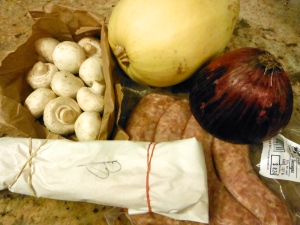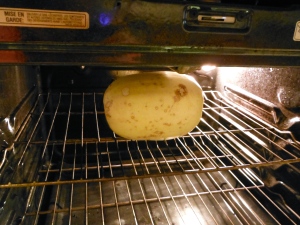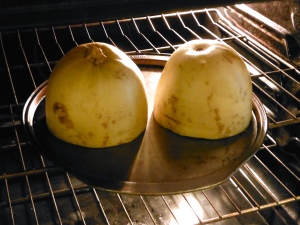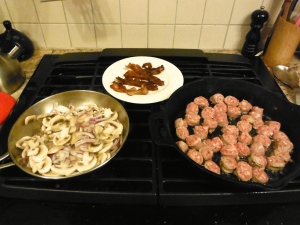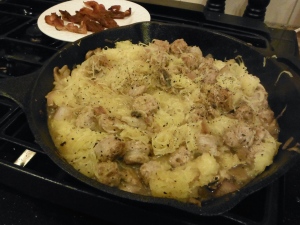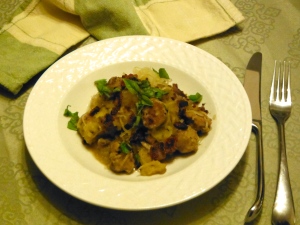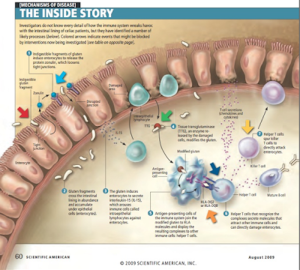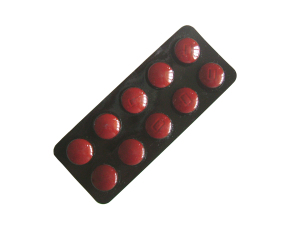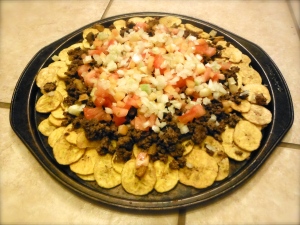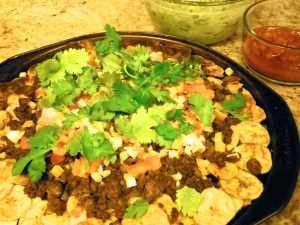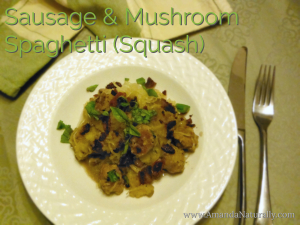 When I first started cooking, I would follow a recipe exactly as it was written. As I got more comfortable in the kitchen, I started loosening up a bit. One tablespoon of oil? Approximately a quick circle around the pan. One tsp of cumin? I’d eyeball it in the palm of my hand. The more I practised, the better I got. I started to inherently know when an additional spice should be added, or what ingredients were okay to omit if I didn’t have them. Before I knew it, I stopped following recipes altogether! I learned some basic flavour combinations such as chill powder, cumin and oregano; lemon, garlic and rosemary; dijon and thyme – and started applying them to various cuts of meat and veggie dishes. Now I rarely follow a recipe, which can actually make it challenging when I’m trying to post my recipes for you guys!
When I first started cooking, I would follow a recipe exactly as it was written. As I got more comfortable in the kitchen, I started loosening up a bit. One tablespoon of oil? Approximately a quick circle around the pan. One tsp of cumin? I’d eyeball it in the palm of my hand. The more I practised, the better I got. I started to inherently know when an additional spice should be added, or what ingredients were okay to omit if I didn’t have them. Before I knew it, I stopped following recipes altogether! I learned some basic flavour combinations such as chill powder, cumin and oregano; lemon, garlic and rosemary; dijon and thyme – and started applying them to various cuts of meat and veggie dishes. Now I rarely follow a recipe, which can actually make it challenging when I’m trying to post my recipes for you guys!
This recipe is a perfect example of that. I had a few ingredients in my kitchen, but no plan. I started with sausage and wanted to do something different with it. I mean, I love grilled sausages topped with sautéed onions and mounds of sauerkraut, but a girl’s gotta have some variety! I was trying to think about other ways that sausage is used and I instantly flashed back to the Sausage and Pepper Penne we served at the East Side Mario’s I worked at back in school. I decided on a pasta!
As I do with all my squash, I turned the oven on to 400F and threw the squash in whole as it was preheating, for 25 minutes. It has never exploded on me and it makes cutting it open WAY easier! After 25 minutes, cut in half width wise, scoop out the seeds and place cut side down in a pan. Roast for another 15-25 minutes until the skin gives slightly under pressure. Scrape noodles out with a fork!
Cook the bacon, set it aside and sautée the veggies and sausage in the bacon grease.
Toss sautéed veggies and sausage with spaghetti squash. Top with the bacon and fresh basil. Voila – Sausage & Mushroom Spaghetti (Squash)!
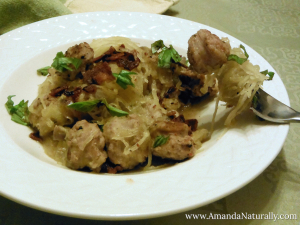
- 1 large spaghetti squash
- 4 pieces of pieces of bacon
- 4 sausages, sliced into bite sized pieces
- 1 cup of mushrooms, sliced
- ½ red onion, sliced thinly
- fresh basil
- salt salt and pepper
- Cook spaghetti squash - set the oven to 400F and throw the squash in whole. After 25 minutes pull the squash, slice it across the circumference, width wise and scoop out the seeds. Place the squash cut side down on a baking sheet and bake for another 15-25 minutes, until soft to the touch. Set aside until you're ready to assemble the pasta.
- Cook the bacon until crispy. Chop into small pieces and set aside.
- Pour half of the bacon grease into another pan. Add onion and mushrooms. Season with sea salt and pepper. Sautee.
- Meanwhile, in the original pan, brown the sausage slices. Approximately 3-4 minutes per side.
- When the sausages are done, add the onion and mushrooms to the sausage pan. Using a fork, scrape the spaghetti squash into noodles into the pan. Season liberally with sea salt and pepper. Toss everything to combine well and distribute the yummy bacon grease.
- Serve in pasta bowls topped with bacon and fresh basil.


